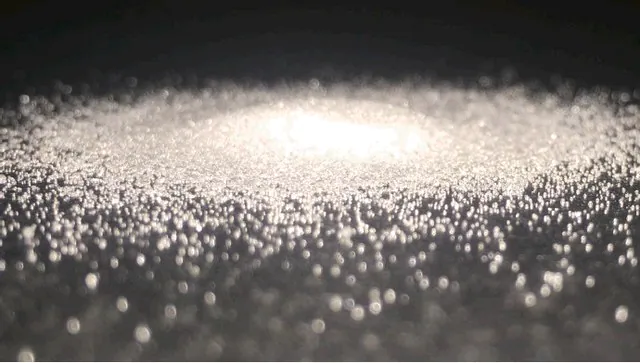您的位置:首页 > 产品中心 > 9003-63-8, Poly(butyl methacrylate)
Poly(butyl methacrylate)

产品价格查看更多规格...
| 产品编号 | 包装单位 | 单价(元) | 国内现货 | 国外库存 | 询价单 |
| 4085631 | 5 G | 1036 | |||
| 4085631 | 250 G | 1590 |
产品别名
9003-63-8
Poly(butyl methacrylate)
PBMA
结构式
基本信息
| Linear Formula【线性分子式】 | (C8H14O2)n |
| General description【一般描述】 | Additional Benefit: Conventional high molecular weight poly(butyl methacrylate) easily forms a fused block that require mechanical force (such as hammering) to break it down into small particles before usage. This product was developed with an anti-blocking technology and comes in an easy-to-use, free flowing, bead form. |
| Application【应用】 | Poly(butyl methacrylate) finds applications in various areas. It may be used to study the photoluminescence in EuTFC embedded in Poly(butyl methacrylate) (PBMA) polymer films. It has also been used for coatings, surface modification, solid state battery, silk screen inks, adhesives for plastic and aluminum, plasticizer for hard butyl methacrylate resins, and for improving outdoor durability of vinyl chloride resins in pigmented lacquers. |
| Preparation Note【制备说明】 | How to Prepare Solutions: This polymer dissolves at room temperature but requires constant agitation to prevent solvent-swollen granules of polymer from forming agglomerates and sticking to the walls of the vessel. Important: The polymer beads should be sifted directly into the vortex of the stirred solvent to speed wetting-out and dispersion. Continuous low-shear agitation for periods of 1-12 hours, depending on the grade and concentration of resin, is recommended. After the solution appears clear in the tank, a sample should be spread out on a Leneta card or glass. After the solvent evaporates and a film forms on the card or glass, there should not be any resin seeds. If there are any seeds, the tank should be agitated further to fully dissolve the resin. Tank agitation should not be stopped (except for sampling) until the film test indicates there are no resin seeds. Any cloudiness or residue may indicate that some polymer remains undissolved. The presence of water in the system can also cause cloudiness. Solution time can be reduced by heating; most common solvents can be heated to approximately 49℃ (120°F) without the need for reflux equipment. High-shear agitation also cuts dissolving time, but requires care to avoid overheating and excessive solvent loss. |
产品性质
| description【描述】 | Brookfield Viscosity in 40% toluene: 500-800 cPs Glass transition temperature onset: 20 ℃ Maximum % Moisture: 0.30% |
| form【形式】 | solid (bead) |
| mol wt【分子量】 | Mw 211,000 |
| refractive index【折射率】 | n |
| density | 1.07 g/mL at 25 ℃ (lit.) |
| InChI | 1S/C8H14O2/c1-4-5-6-10-8(9)7(2)3/h2,4-6H2,1,3H3 |
| InChI key | SOGAXMICEFXMKE-UHFFFAOYSA-N |
安全信息
| Pictograms【象形图】 | GHS07 |
| Signal word【警示用语:】 | Warning |
| Hazard Statements | H317 |
| Precautionary Statements | P261 - P272 - P280 - P302 + P352 - P333 + P313 - P362 + P364 |
| Hazard Classifications【危险分类】 | Skin Sens. 1 |
| Storage Class Code【储存分类代码】 | 11 - Combustible Solids |
| WGK | WGK 3 |




